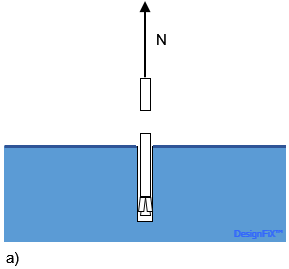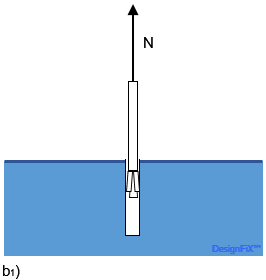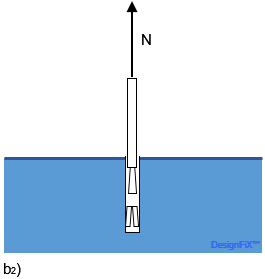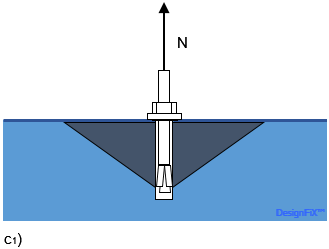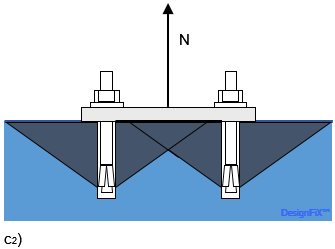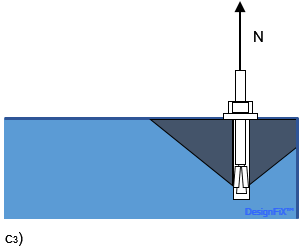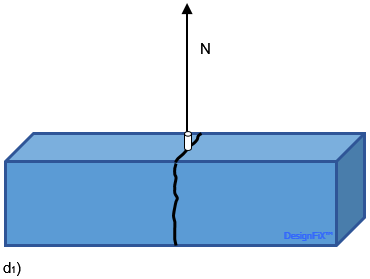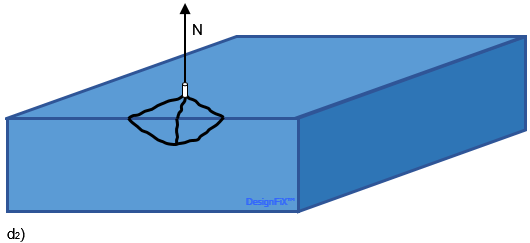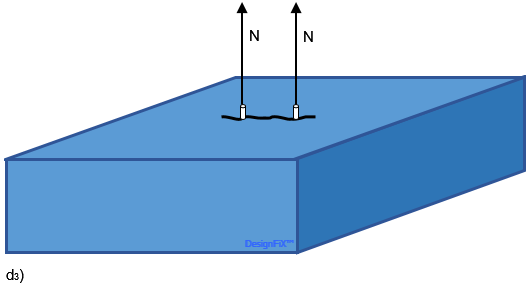Search DesignFiX Knowledge Base by Keyword
Failure modes of post-installed anchors under tension load
Mechanical post-installed anchors fail under tension load by steel failure, pull-out/pull-through failure, conical concrete break-out and splitting failure (Figure 11). Chemical post-installed anchors do not fail due to pull-out/pull-through but due to combined pull-out and concrete failure. Steel failure is characterized by fracture in the shaft or the threaded area (Figure 11a) or in the sleeve. Pull-out failure of mechanical post-installed anchors is characterized by the anchor being pulled out of the hole, whereby the concrete at the mouth of the hole may be damaged as well (Figure 11b1). Pull-through appears only in case of properly functioning torque-controlled expansion anchors. Then the cone is pulled through the expansion sleeve or expansion segments (Figure 11b2). Conical concrete break-out is characterized by the formation of a cone-shaped fracture body (Figure 11c1). In case of small axial spacing between adjacent anchors a common concrete break-out develops (Figure 11c2). If an anchor is positioned close to an edge, then the cone is truncated by the edge and a complete break-out cone cannot form (Figure 11c3). Splitting is the failure mode in which the concrete component splits completely (Figure 11d1) or cracks occur between anchor and the component’s edge (Figure 11d2). In case of closely spaced anchors cracks may develop between adjacent anchors during installation (Figure 11d3).
Chemical post-installed anchors fail due to combined pull-out and concrete failure. Then a concrete cone develops close to the component’s surface whose height is product-dependent and is 0,3 to 0,7-times the embedment depth (Mallée, R.; Fuchs, W.; Eligehausen, R.: Design of Fastenings for Use in Concrete – the CEN/TS 1992-4 Provisions. Ernst & Sohn, Berlin, 2013). On the remaining anchorage length the bond between mortar and concrete or between threaded rod and mortar is destroyed. Often a mixed bond failure occurs (in the upper part of the rod between mortar and concrete and in the lower part between threaded rod and mortar).

